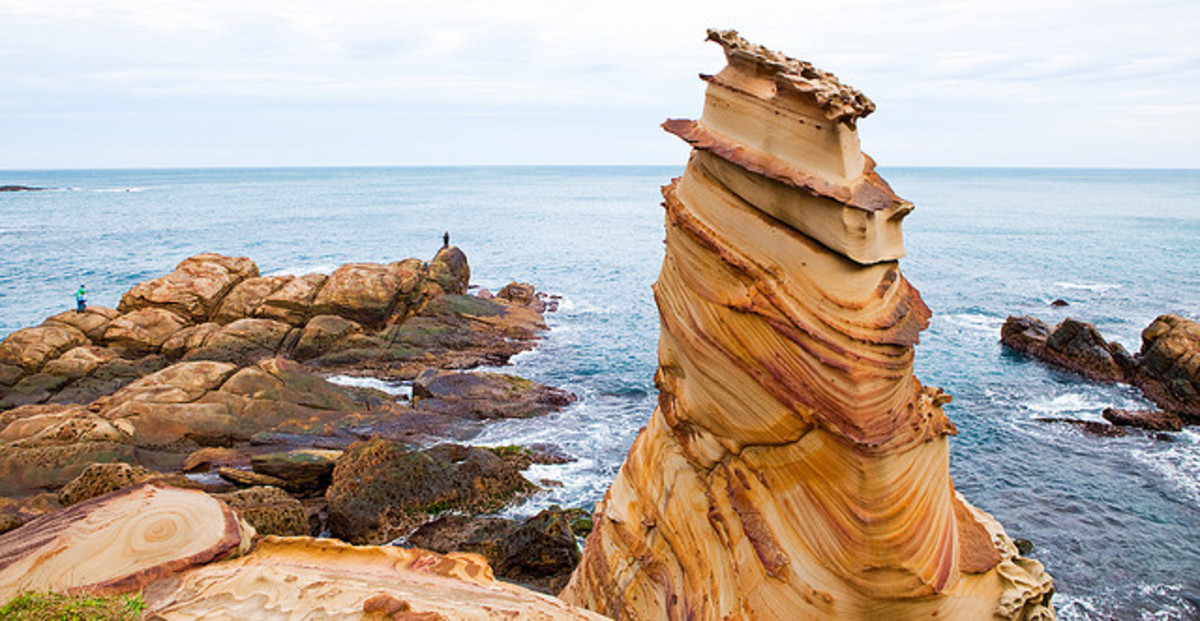Keeping in mind the different reasons for the rock formation, there are several types of rock formations in the world. If you’re new to this exploring, then keep this guide which will lead you to the most famous, natural or the closest rock formations which keen traveler must know about.
1. Aphrodite’s Rock (Cyprus)
This is one of the most famous spots in Pafos, a coastal city in Cyprus. It is also known as Petra tou Romiou, which means ‘Rock of the Greek.’ Its popularity is linked with Greek mythology and the belief that Aphrodite—the goddess of love, beauty, procreation and pleasure—was born here. There is a belief that swimming around Aphrodite’s rock brings one eternal beauty.
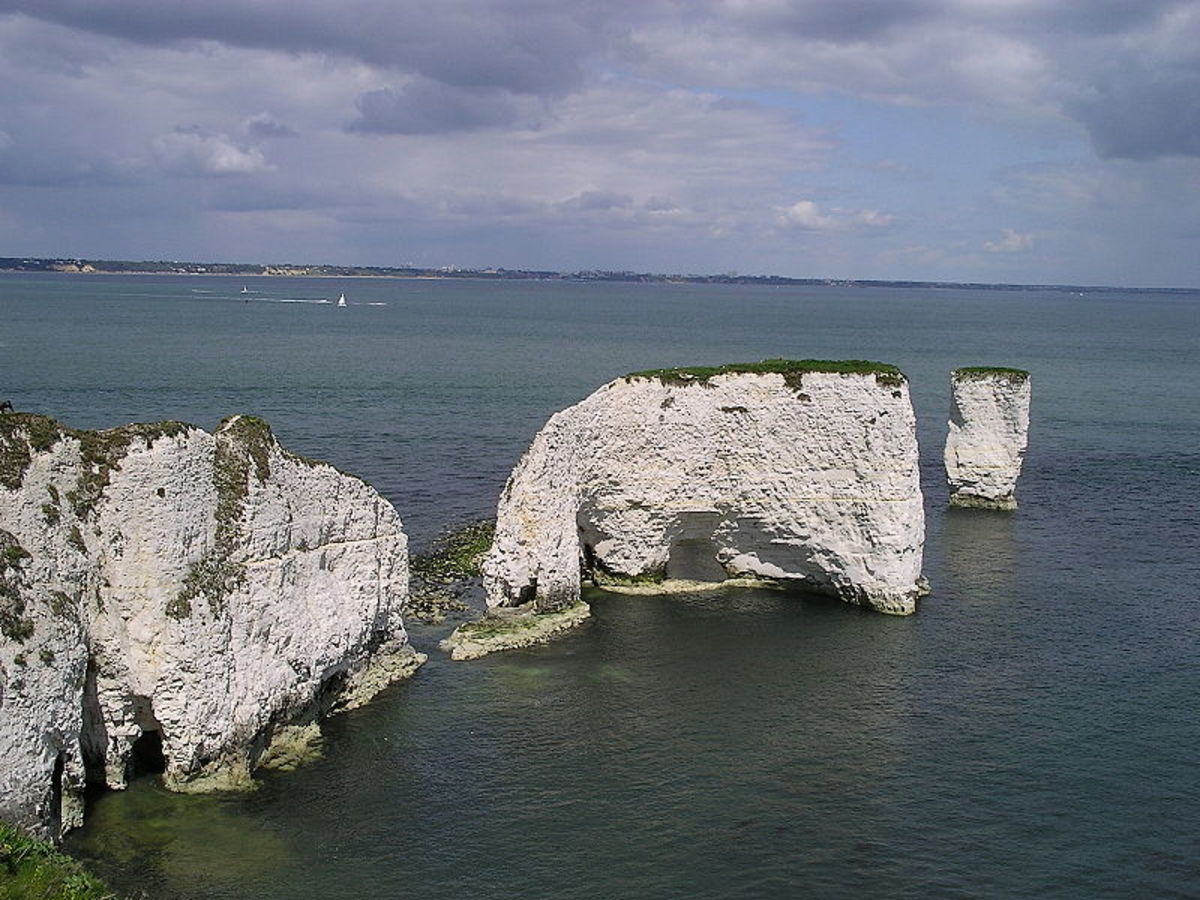
2. Old Harry Rocks (England)
Located about 10 kilometres south of Poole and Bournemouth, these rocks are over 60 million years old (dating from the Cretaceous Period). The erosion caused by the constant lapping of the sea means these chalk formations are ever-changing. In fact, this erosion has taken away Old Harry’s ‘wife’, which has been reduced to a stump visible only during low tide. This UNESCO World Heritage site at the end of the Jurassic Coast is simply spectacular.
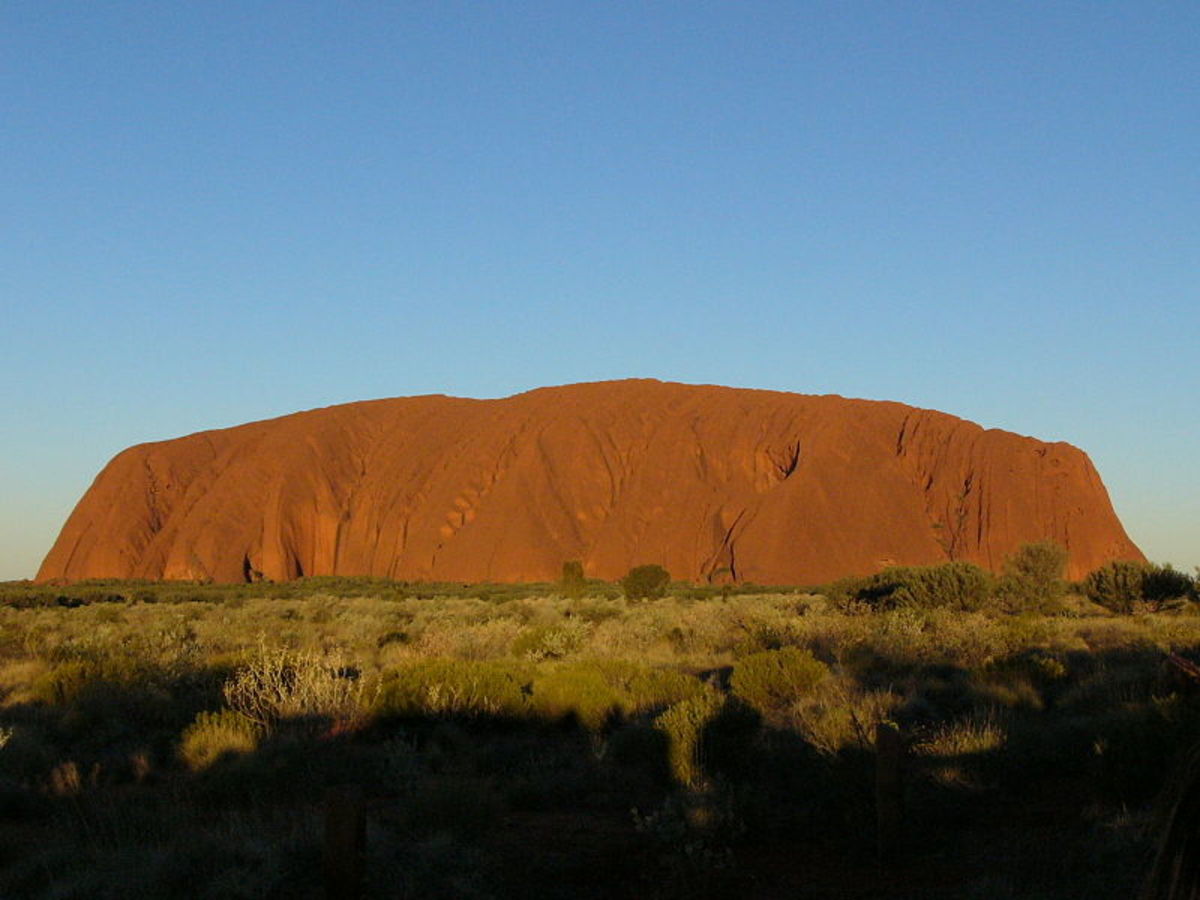
3. Uluru aka Ayers Rock (Australia)
If one has to name a natural landmark in Australia, there is none more famous than Ayers Rock, also known as Uluru. Located in the Northern Territory (Central Australia), this sacred sandstone rock formation is one of the world’s largest monoliths, having a height of more than 318 metres (or nearly 1,000 feet). A trip around the rock’s base would be around 9 km.
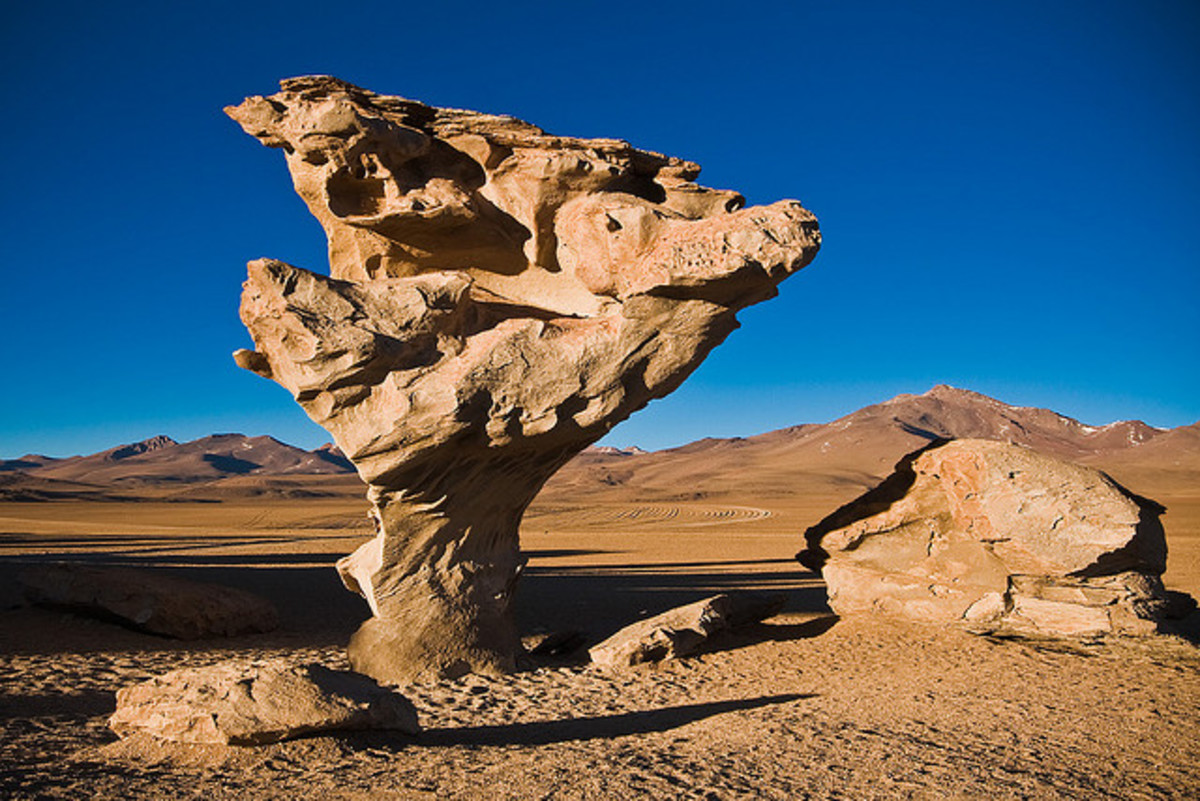
The image above shows Uluru at midday, but the changes in its colour are most impressive at sunset and sunrise.
4. The Arbol de Piedra (Bolivia)
The Arbol de Piedra is another stunning example of geological erosion; over millennia, strong winds have rendered this volcanic rock formation thin at its base. Situated in the Desierto Siloli in Bolivia about 4,600 metres above sea level, the uniqueness of this isolated rock lies in its resemblance to a stunted tree.
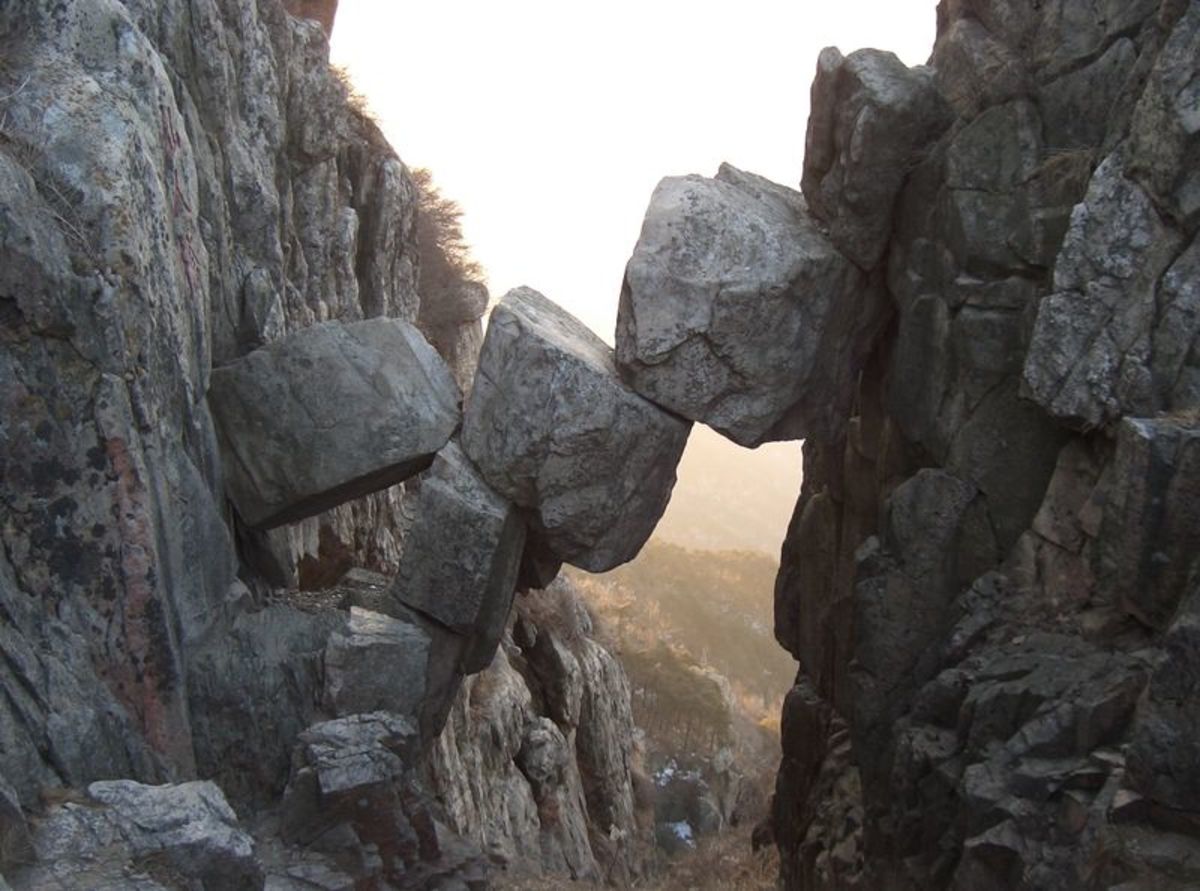
5. Mt. Tai’s Immortal Bridge (China)
Believed to be from the Ice Age, the rock formation on Mount Tai in the Shandong province of China is composed of three huge boulders and several smaller ones. Mount Tai is a sacred mountain in China; perhaps the sacred connection led to this amazing formation being named the “immortal bridge”.
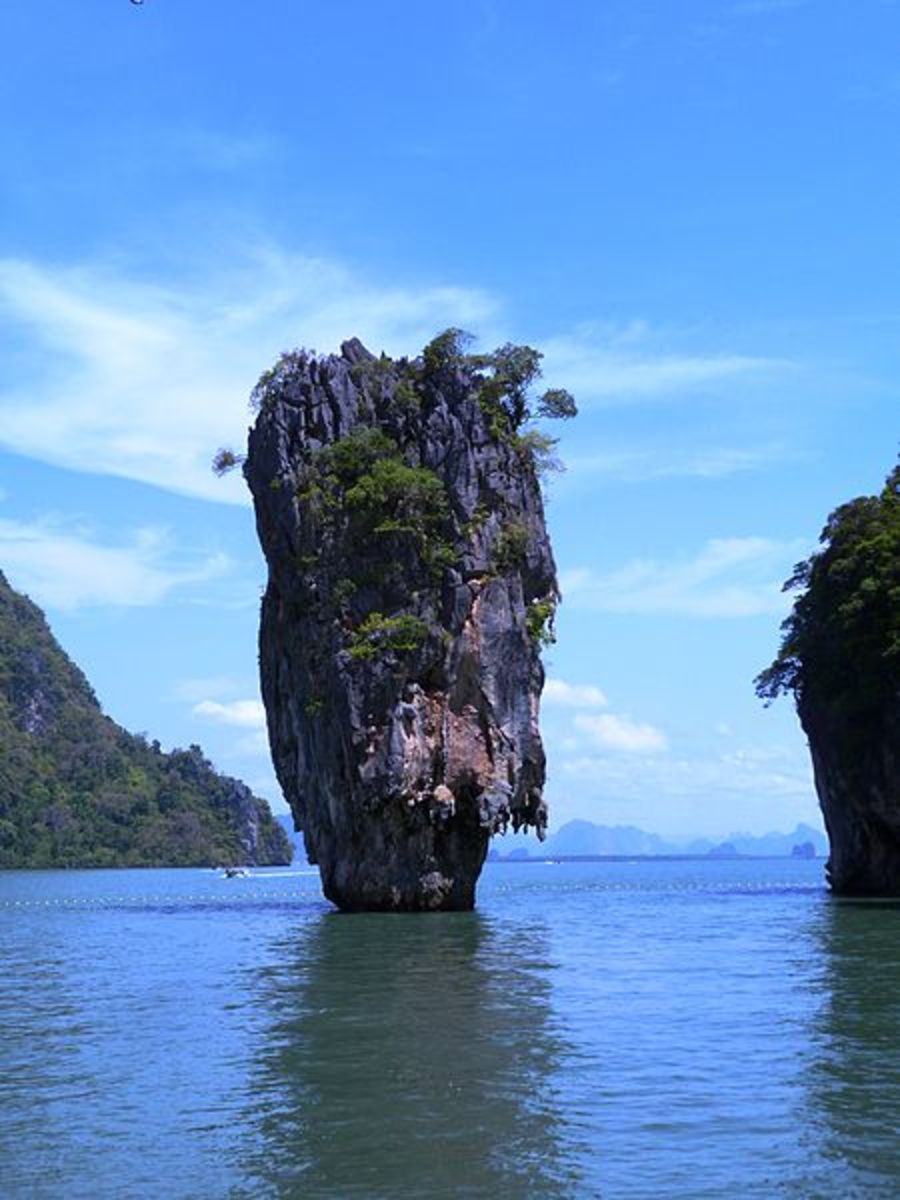
6. Khao Ta-Pu aka James Bond Island (Thailand)
Those who have seen the James Bond movie The Man with the Golden Gun will recall this famous rock in Thailand’s Phang Nga Bay. Part of the Ao Phang Nga Marine National Park since 1981, this 20-metre-high limestone rock (which increases in diameter towards the top) is frequented by tourists. However, in order to avoid damage to this fabulous limestone formation, restrictions prevent boats from going too near.
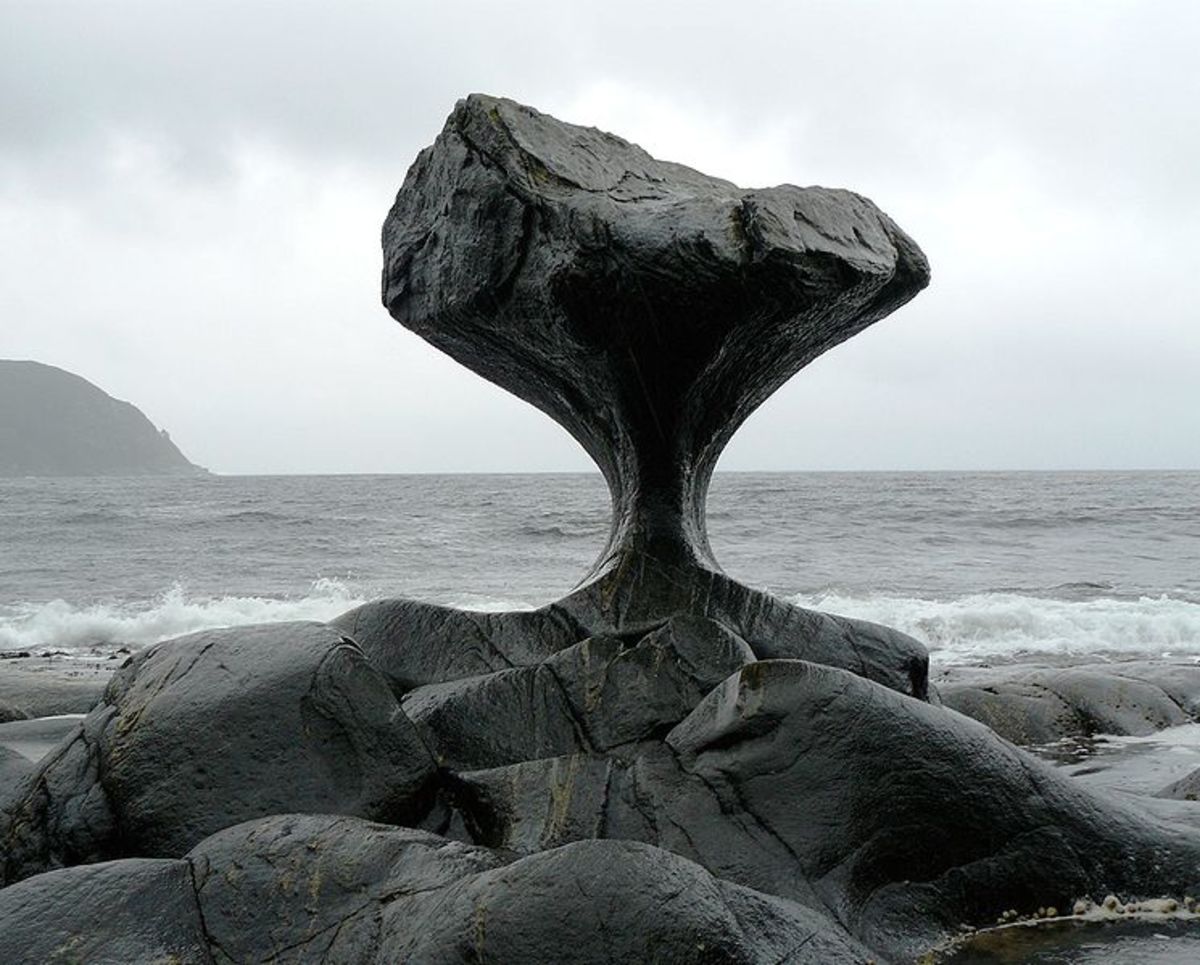
7. Kannesteinen Vågsøy (Norway)
Supported by a narrow trunk, this huge stone is located in high water near the village of Oppedal in the Municipality of Vågsøy. This giant, mushroom-like rock clocks in at 3 metres tall and is thousands of years old. It was formed artistically by the might of the sea, which eroded some parts of it to give it a spectacular shape.
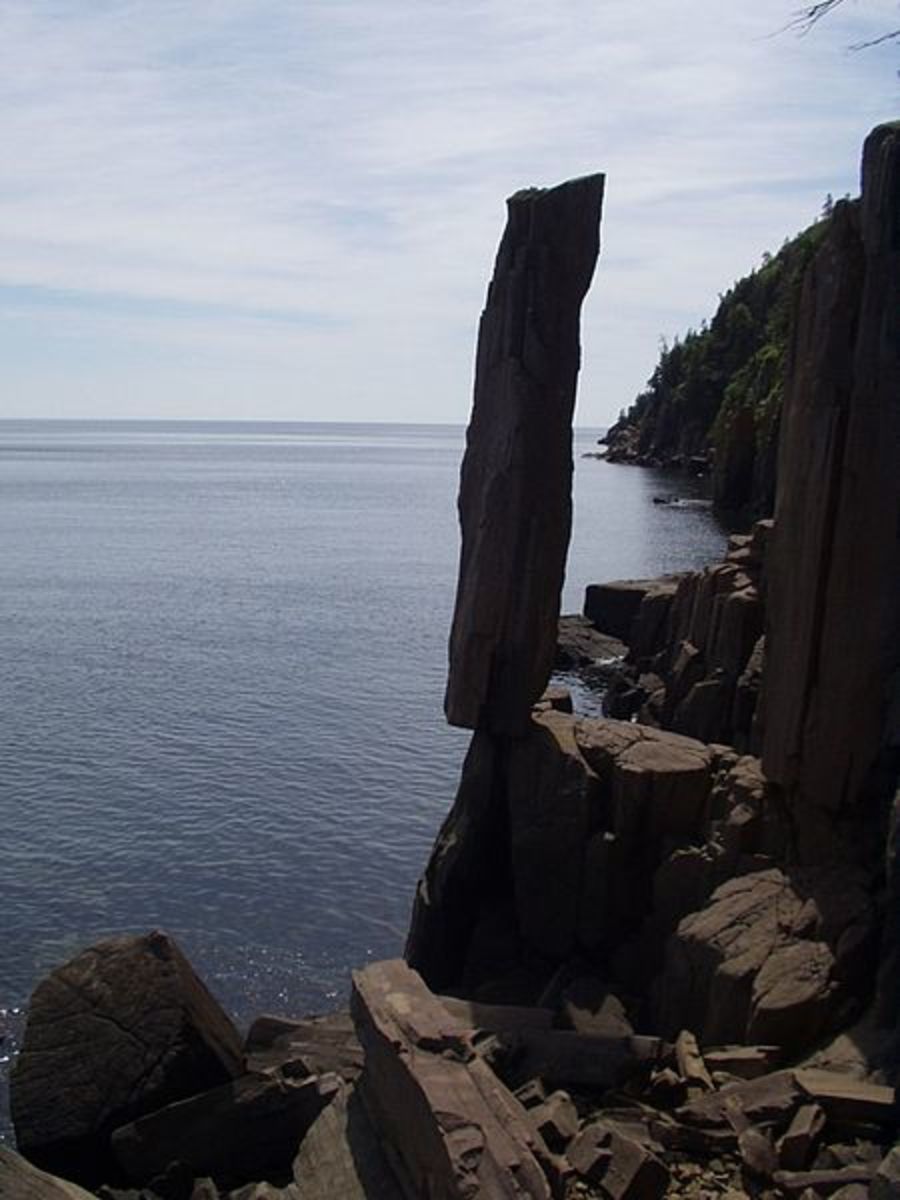
8. Balancing Rock (Canada)
Believed to be standing for thousands of years, Long Island’s Balancing Rock at Digby Neck seems to defy gravity. The columnar basalt rock has defied erosion and is standing tall at about 9 meters in height. Its lack of much visible support makes it a unique natural attraction.
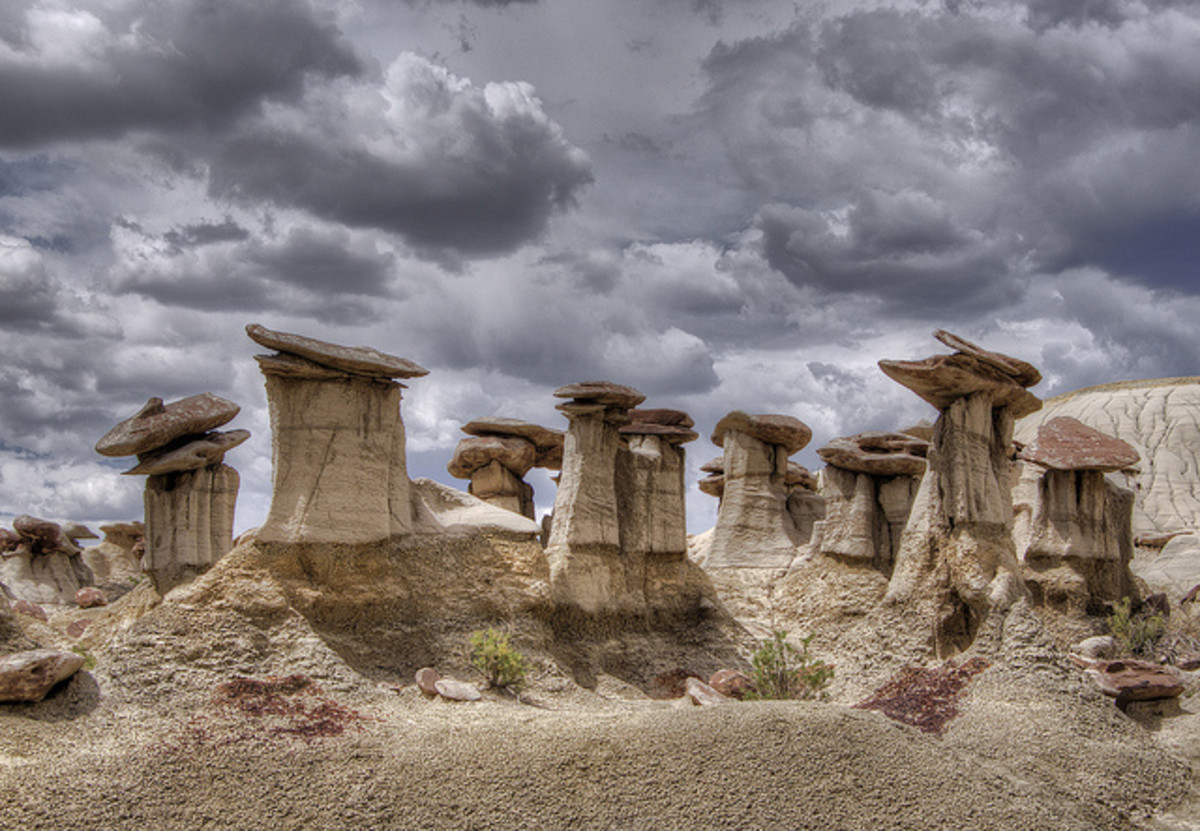
9. Hoodoos at Ah-Shi-Sle-Pah Wilderness Area (Mexico)
Another rock formation that has long attracted tourists is the Hoodoos, spread over an area of about 26 square kilometres in northwest Mexico. (The site has been declared a protected area, as a large number of fossils have been found here.) The Hoodoos’ unique shape is due to the sandstone’s differential resistance to erosion. Surprisingly, the topmost part (called cap rock) is normally the hardest, protecting the softer parts of the rock below.
Located mostly in the dry and hot desert areas, the size of the Hoodoos varies from 5 feet to over 100 feet. Similarly, their structures also show wide variations in mineral composition, affecting the colour and density of the rocks and resulting in many different visible layers caused by erosion.
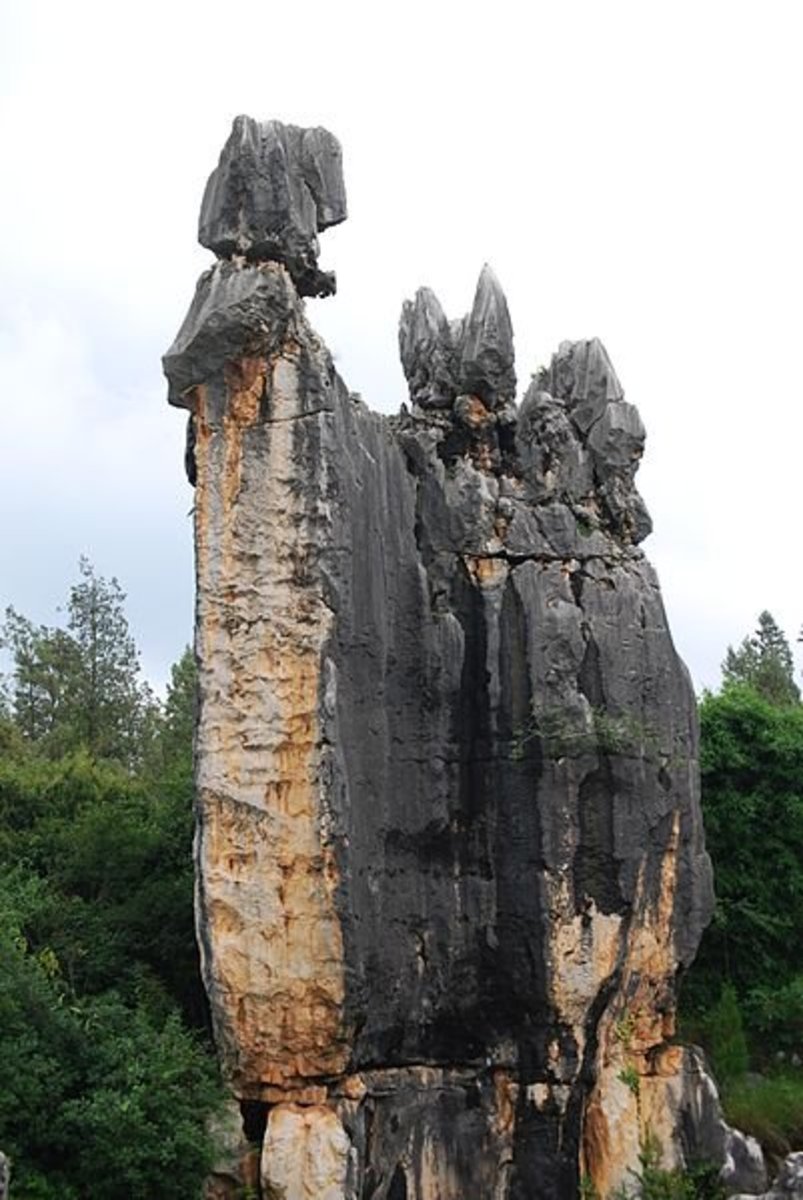
10. Ashima, Shilin Yunnan (China)
This limestone formation is a part of the Stone Forest, which is spread over about 400 square kilometres in Lunan county (Yunnan province) of the People’s Republic of China. The countless stone formations in the Forest have different shapes—from high pillars and camel humps to elephant shapes—caused by the fury of nature millions of years ago. Ashima peak is believed to be the incarnation of Ashima, a Hani girl, and is respected greatly.
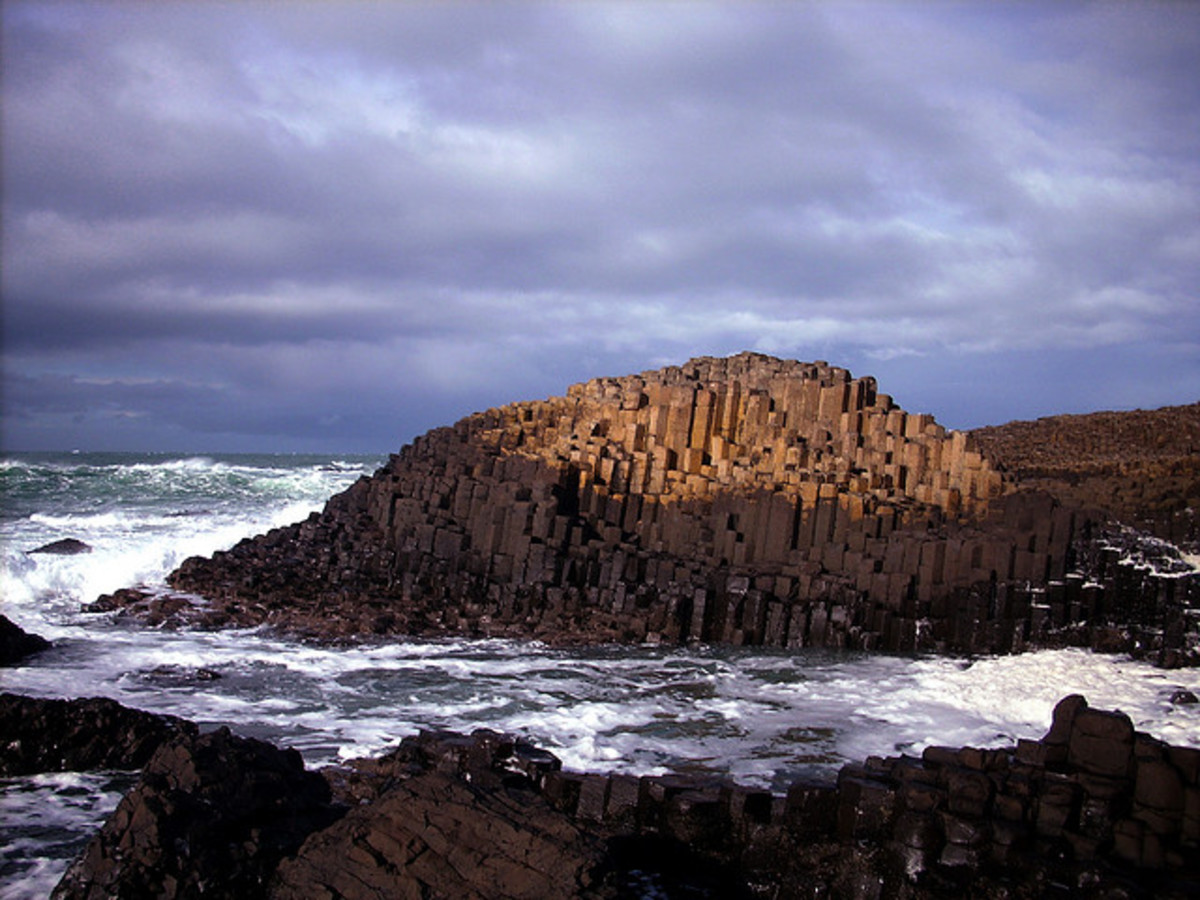
11. Giant’s Causeway (Northern Ireland)
A UNESCO Heritage Site located in the County Antrim in Northern Ireland, Giant’s Causeway is a splendid show of the aftermath of a particular kind of volcanic activity. These interlocking basalt columns, numbering nearly 40,000, are formed by the rapid cooling of lava that has been pushed through fissures in the ocean floor. They are mostly hexagonal, and so perfect that they give the impression of being man-made. This site continues to be a major tourist attraction in Northern Ireland.
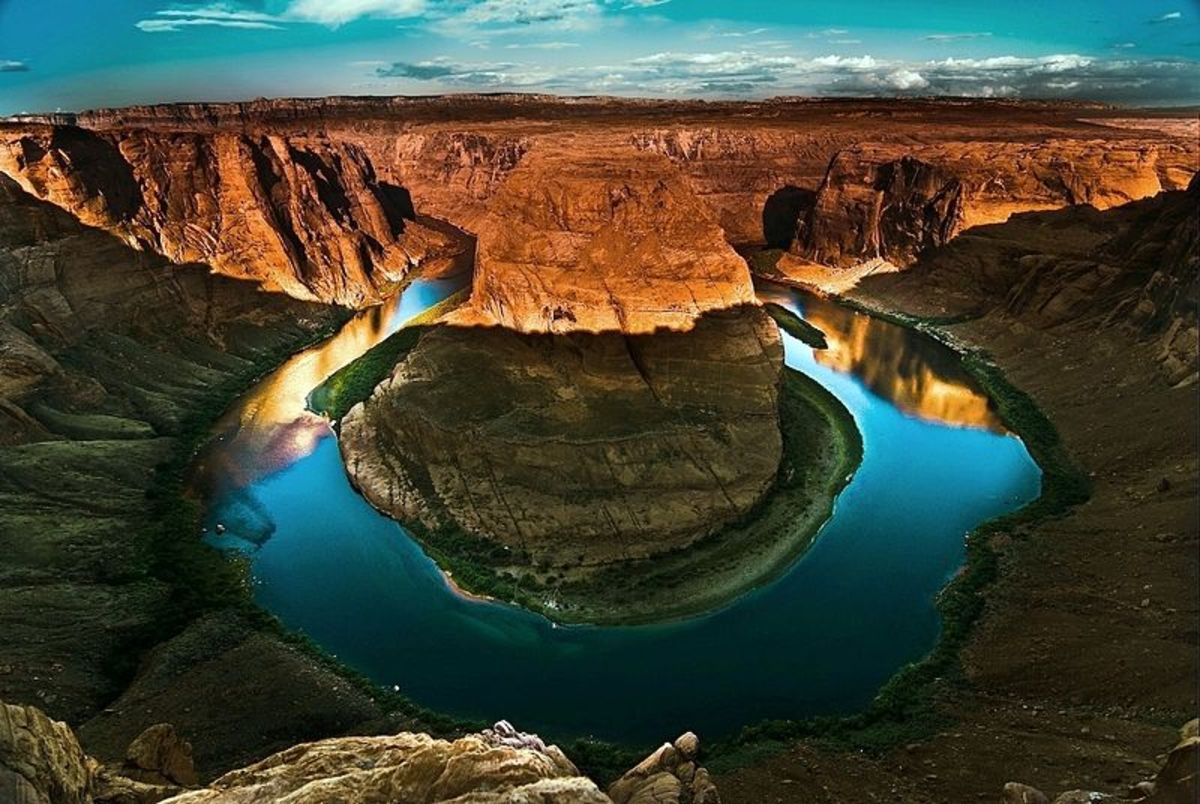
12. Horseshoe Bend (Arizona, USA)
Just outside of Page in Arizona, there is an amazing site called Horseshoe Bend. Over millennia, the Colorado River has cut a deep gorge in the rock, which wraps around in a breathtaking horseshoe shape.
There can be dramatic changes in the brightness of the images one gets at different times of the day with changing positions of the sun. It is sometimes scary for the tourist, as there are no guard railings at the edge of the cliff. For another angle, you might enjoy taking in the rock formation from a raft on the river below.
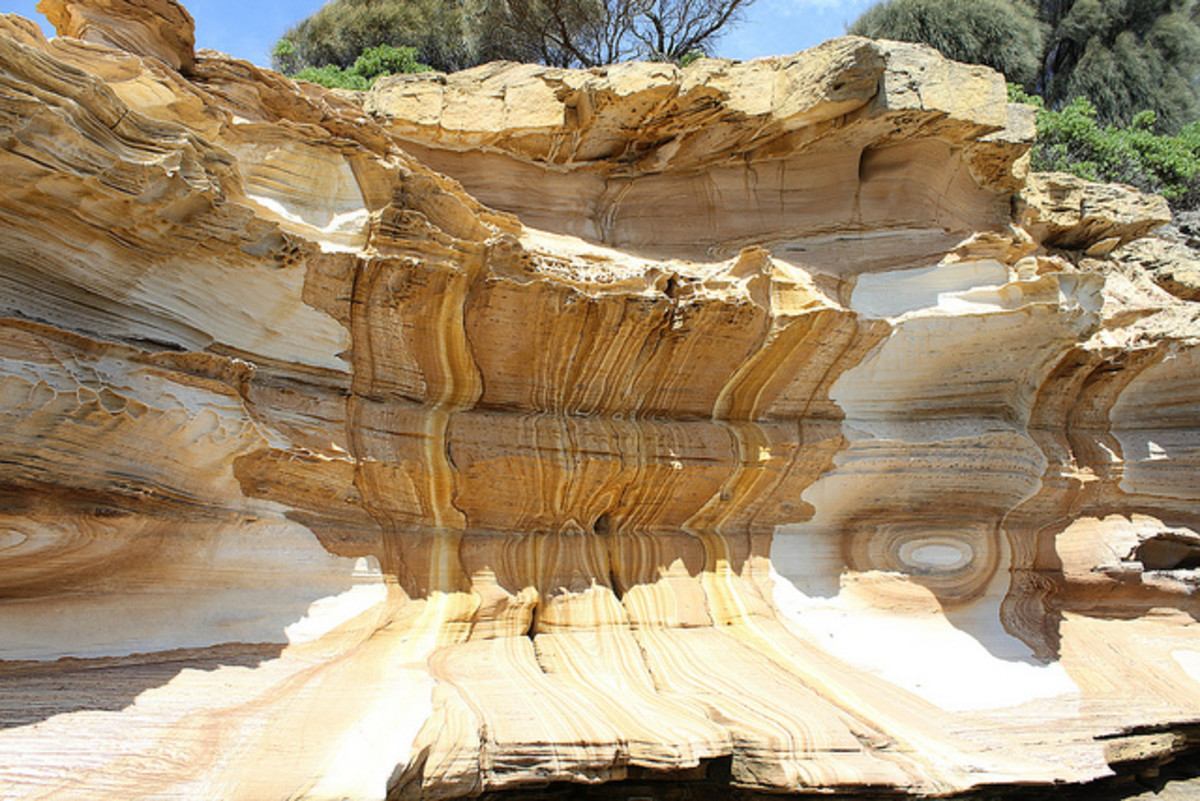
13. Painted Cliffs (Tasmania)
Those interested in geological periods will undoubtedly enjoy seeing the Painted Cliffs of Maria Island in Tasmania. The percolation of groundwater through the sandstone millions of years ago left traces of iron oxides, thus creating a 100-metre stretch of beautiful patterns that look almost like paintwork. The weathering of the crystals has now formed honeycomb patterns, but it is still magical. The abundant wildlife around makes it an even more incredible spot for tourists.
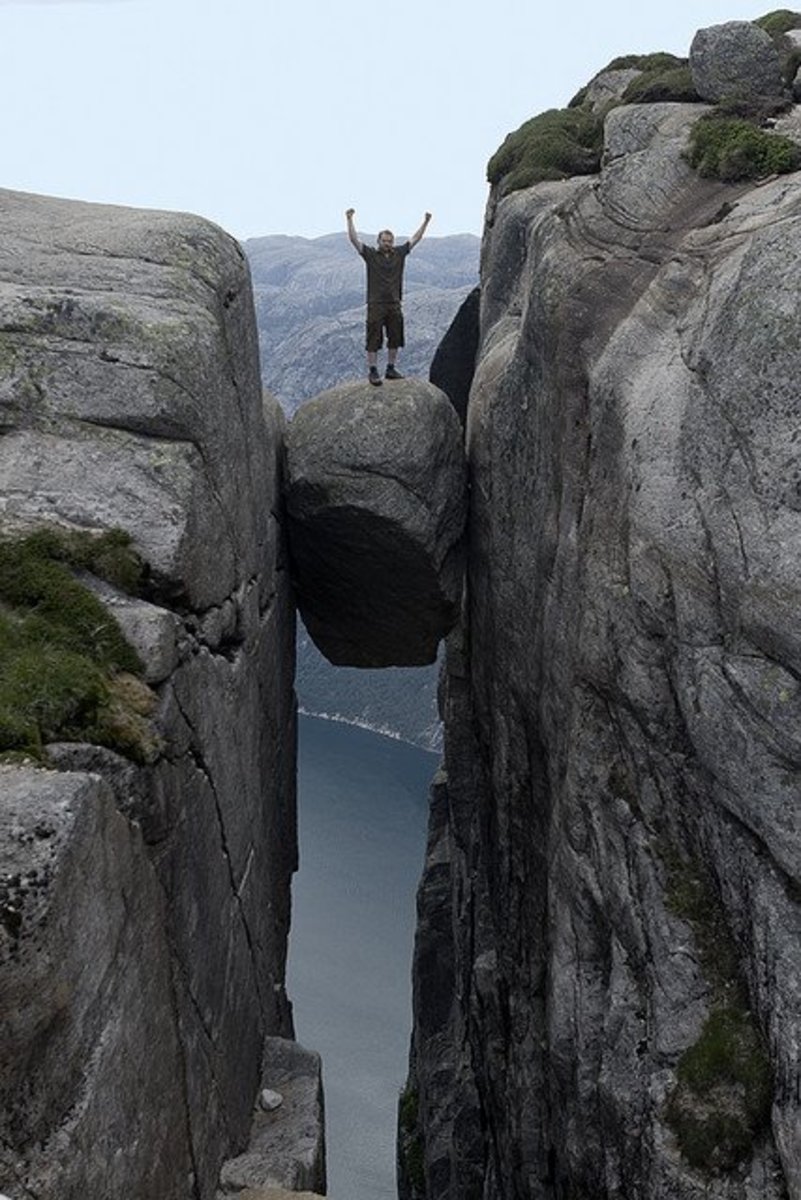
14. Kjeragbolten (Norway)
One of the most popular tourist destinations in Norway, Kjeragbolten is located in a crevasse of Kjerag mountain. It is a giant, rounded bolder which has been stuck solidly in the crack in this mountain for years. Adventurous tourists take pleasure in standing at the top of Kjeragbolten. Though access to this unique formation is not as frightening as it looks, actually stepping out onto the rock is still a very daring endeavor that is surely not for the faint of heart. Surprisingly, many tourists are not afraid of dropping from the cliff, which is about 1,000 metres high . . . or at least not too afraid to miss a golden photo opportunity!

15. Faraglioni dei Ciclopi, Sicily (Italy)
On the east coast of Sicily, you will find Aci Trezza, a beautiful town situated near Catania and home to the famous Faraglioni dei Ciclopi. Known as the Island of Cyclops, the bizarrely shaped rocks are called Faraglioni di Trezza by locals. Its rocks are of volcanic origin linked to the first activity of the famous Mount Etna in 1669. The site is of great archaeological importance and attracts many tourists.
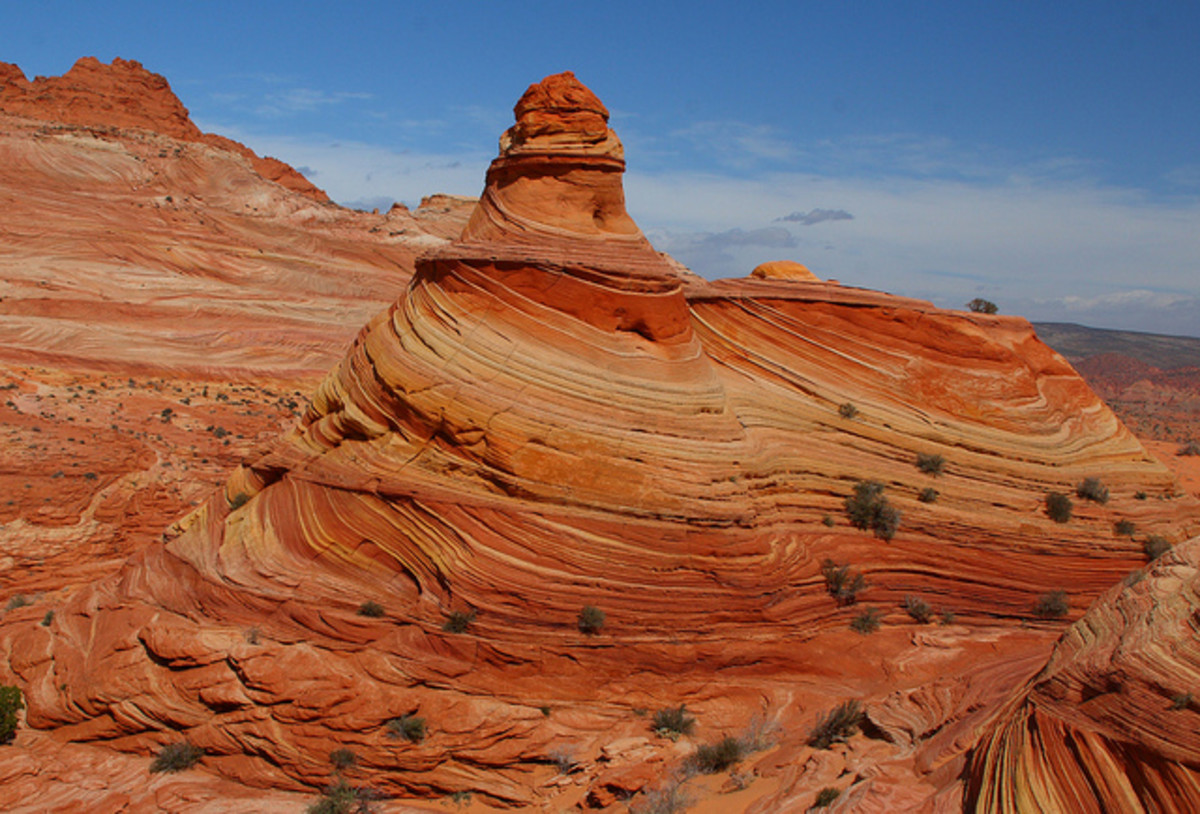
16. Wave Rock (Arizona, USA)
Snapping photographs is a delightful activity, nowhere more so than at Wave Rock in Arizona. Deciding on the best angle is a challenge, as every degree of change only makes the formation more fascinating. A visit to this magical sandstone rock formation is an incredible hiking experience, though it can prove to be a harsh desert-like one, depending upon the prevailing weather conditions.
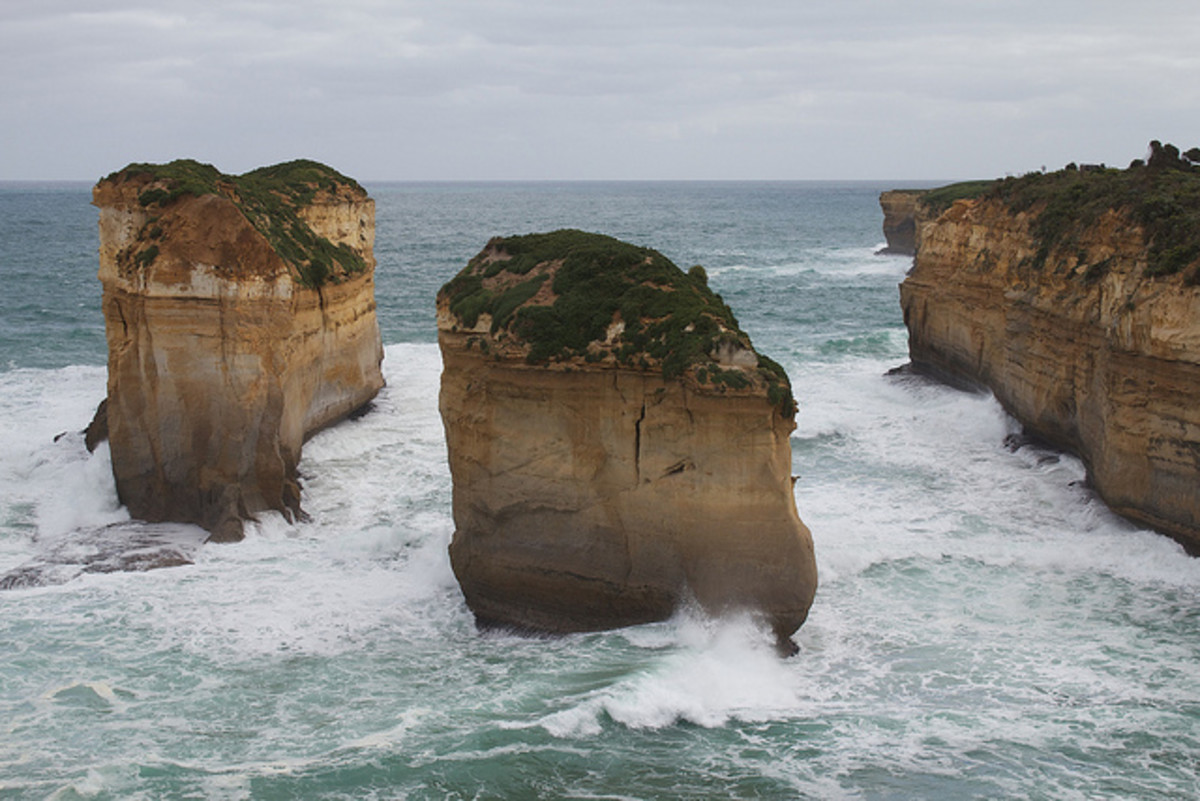
Note: Due to its fragility, access is restricted to only 20 people per day, so plan ahead!
17. Loch Ard Gorge (Australia)
Loch Ard was a clipper ship that was wrecked while heading to Melbourne from England in 1878. The ill-fated ship had 54 passengers and crew, out of which only 2 survived. Both survivors washed into a cave now known as Loch Ard Gorge. It is a part of the Port Campbell National Park in Victoria, which is popular among tourists for relaxing and swimming. However, erosion is taking place even now at this southwestern coastal landmark.
As a result of erosion, one of the massive limestone arches at Loch Ard Gorge collapsed in June of 2009. The resulting pillars are now known as Tom and Eva (after Tom Pearce and Eva Carmichael, the two passengers who survived). These two rock formations now look like the 12 Apostles formation nearby.
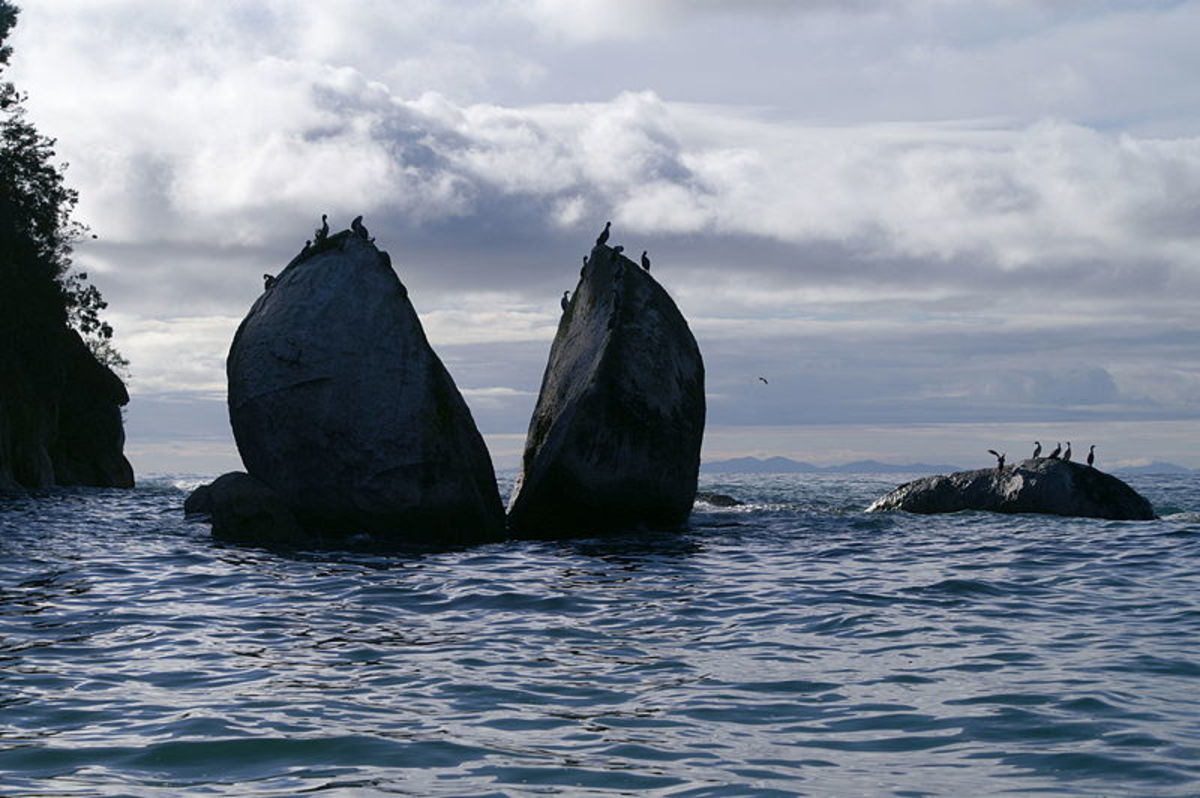
18. Split Apple Rock (New Zealand)
Abel Tasman National Park on the South Island of New Zealand has a beautiful rock called Split Apple Rock. As you an imagine, an apple-shaped rock formation split in two due to the force generated by the freezing and expanding of water in a crack in the rock during one of the Ice Ages. A high-tide view of this granite rock is most fascinating.
According to Māori legend, two gods split this rock in two while fighting over it.
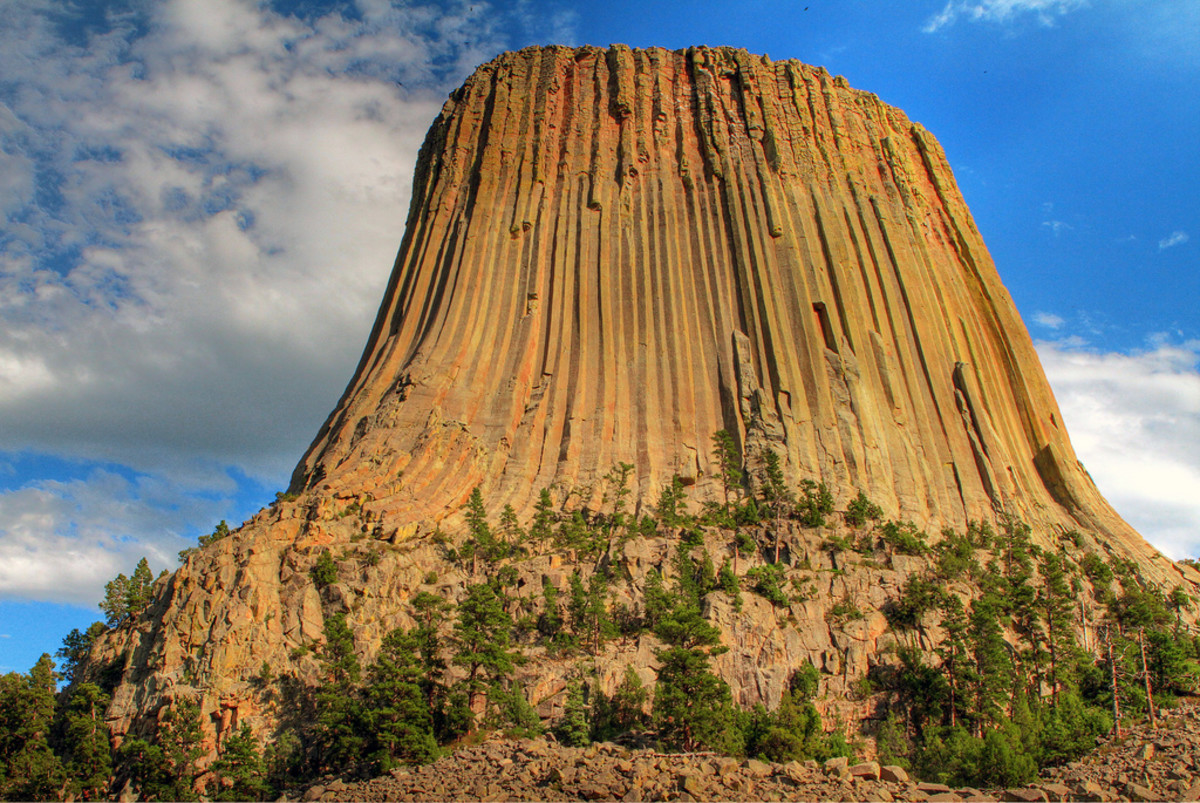
19. Devil’s Tower (Wyoming, USA)
Northeastern Wyoming has the honour of being home to the first United States National Monument—Devil’s Tower. This geologically unique feature is quite sacred and is a place of worship for the Lakota and other tribes. The formation of this giant structure is still debatable, but most geologists consider it to be an igneous intrusion—a formation created by the underground cooling and condensing of magma. Interestingly, this tower remained underground (and invisible) for millennia, but erosion has since exposed it. This erosion is happening even now, due to rains and snow.
